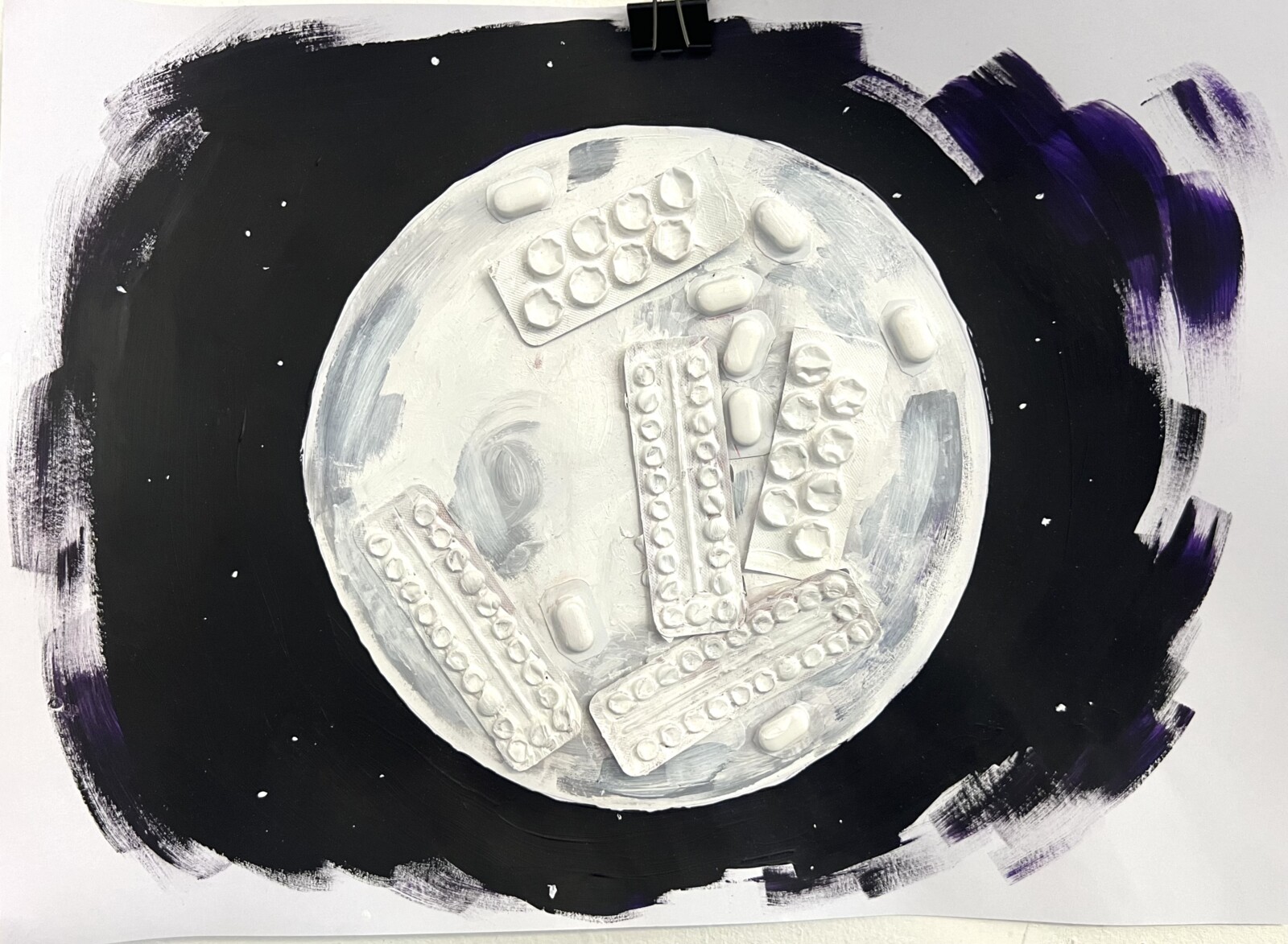Moon, tides, and cycles
This piece is about my own experience of the contraceptive pill, and how it changes the way I relate to my body in the world and as part of nature. Lots of people relate to the moon what with their menstrual cycles and ‘natural’ rhythms which reflect the moon and its waxing and waning, but for me personally, my ‘moon cycle’ is totally static and man-made, as I have to stay on the pill due to my medical condition.
When I look at the piece, what I initially think is the natural bumps and craters of the moon is in fact multiple, empty plastic medicine packets – paracetamol, ibuprofen, and the contraceptive pill. Rather than a plastic-filled ocean, I’m looking up at this plastic moon.
Often when we think about the moon, we think about consistency and change all in one. When you see it up in the sky in all its beauty and shiny roundness, part of why it’s lovely is that you know it won’t be the last time you see it. It moves the tides of the ocean, which are different all the time, but also remain consistent in some ways. Illness is not this linear thing of ill>treatment>better, it’s this weird waxing and waning thing, like the tides, and some days are good, and some days are bad, and we do our very best to manage, to ride the waves.
There are so few things in medicine which are ‘quick fixes’, and most of the time it’s all about optimising the management and accepting that we might have to take a medication every single day for the next few months, or years, or forever. And some of those medications will change your life, change what your every-day looks like, the texture of normal.
So, there’s this funny consistency, this one thing that you will do every single day, and still illness is unpredictable and your life will change around you, but there’s a few things that stay the same, like pills, and the moon in the sky.
Rhiannon Shaw, iBAMH medical student, Bristol, 2024

Rhiannon was keen to have to have her original collage available for delegates to touch at the conference exhibition and workshop. This opportunity to combine visual and tactual exploration highlights the role of multi-sensory engagement to deepen our embodied knowledges.
Rhiannon’s piece draws attention to the contrast between the natural and the artificial. At first glance, it appears to be a simple collage of the moon, but by using empty medication packets it creates a juxtaposition between the untouched surface of the moon associated with the menstrual cycle and the manmade cycle created by the contraceptive pill. The artwork is a reminder that while we can influence our cycles with medications, much of nature, like the phases of the moon, we are unable to control.
Wow, I love this piece. It really makes me think of those natural cycles of life. It reminds me of a podcast episode I listened to, in which a woman described her contraception meaning that she no longer had a menstrual cycle. She went sea swimming under the moonlight, to connect her with a cycle nevertheless.
A beautiful piece.